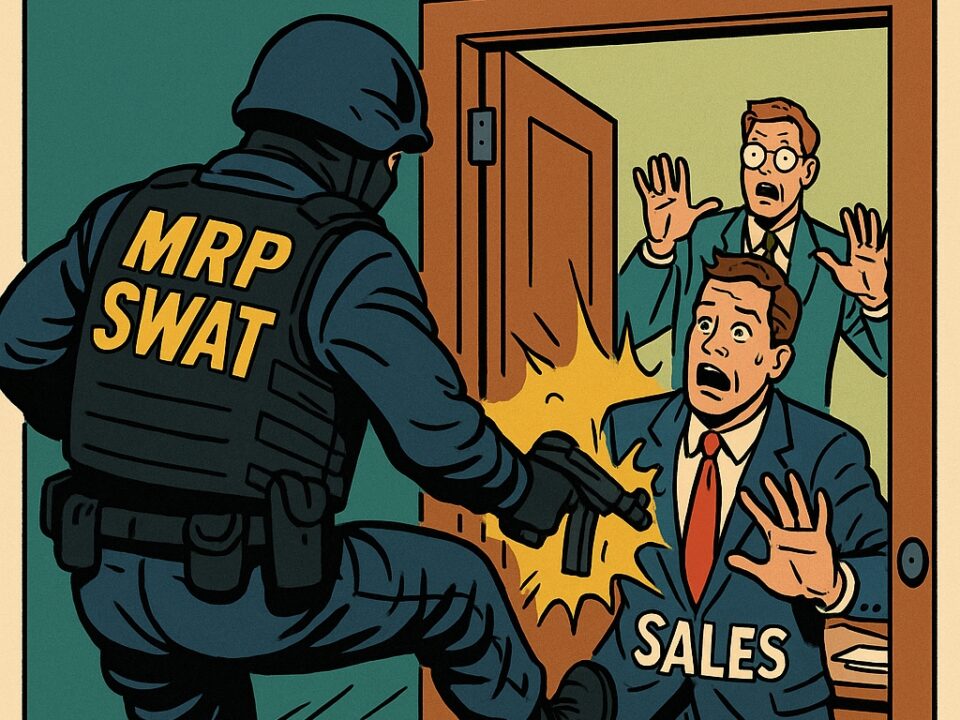
Introduction
In theory, continuous improvement (CI) is a no-brainer. Who wouldn’t want their company to operate more efficiently, reduce waste, and deliver more value to customers? In practice, however, many CI initiatives stall—or never get off the ground—not because they lack merit, but because of resistance rooted in company culture and leadership behavior. Especially in organizations where the ownership or senior executives are disengaged, skeptical, or overly attached to the status quo, even the best ideas often meet a quiet death.
This article explores the often-unspoken cultural and leadership factors that hinder continuous improvement efforts and offers suggestions for overcoming them.
1. The Culture of Control and Hierarchy
In many companies—especially those led by founders or long-standing executives—there is a deeply entrenched command-and-control culture. Decisions flow top-down. Authority is centralized. Risk-taking and challenging the status quo are discouraged. In such environments, CI initiatives, which typically promote empowerment, transparency, and cross-functional collaboration, feel alien or even threatening.
Symptoms:
- Employees are afraid to speak up or suggest changes.
- Improvement proposals must go through multiple layers of approval.
- Middle managers act as gatekeepers rather than facilitators.
Impact:
Ideas get diluted, delayed, or dismissed before they can prove value.
2. Fear of Exposure
CI initiatives often rely on measurement and transparency. They highlight inefficiencies, errors, and missed opportunities—sometimes uncomfortably so. For senior executives or owners, especially those who equate criticism of processes with personal criticism, this can feel like a threat.
Symptoms:
- Resistance to performance metrics.
- Defensive reactions to process audits or root cause analyses.
- Sabotage or passive resistance to pilot projects.
Impact:
Improvement teams lose credibility or are blocked from accessing the data they need.
3. Short-Term Focus and Legacy Thinking
Owners and senior leaders, particularly in family-run or privately-held businesses, may be more focused on stability, cash flow, and protecting their legacy than on disruptive improvement efforts. CI initiatives can be viewed as costly experiments or unnecessary complications—especially if the current system is “good enough.”
Symptoms:
- Reluctance to invest in training, tools, or process redesign.
- Dismissive comments like “we’ve always done it this way.”
- Favoring quick fixes over systemic solutions.
Impact:
CI becomes sidelined during budget cycles or operational planning.
4. Lack of Understanding or Misalignment
Continuous improvement is not always well understood at the top. Leaders may equate it narrowly with Lean tools, cost-cutting, or Six Sigma jargon, without appreciating its strategic value. When there’s no shared vision or language around CI, initiatives appear fragmented or misaligned with business goals.
Symptoms:
- CI treated as a side project or delegated to operational teams.
- No clear sponsorship or alignment with strategic objectives.
- Conflicting priorities between departments.
Impact:
Improvement efforts lack traction and executive support.
5. Ego and Ownership Attachment
In some cases, the problem is more personal than structural. Senior executives or owners who are emotionally attached to the company’s history, products, or processes may view proposed changes as a criticism of their legacy. The result is a subtle but powerful resistance.
Symptoms:
- Personal interference in project decisions.
- Undermining of CI leaders or external consultants.
- Statements like “this isn’t how I built this company.”
Impact:
Change agents become isolated, and momentum dissipates.
Overcoming the Cultural and Leadership Barriers
While these obstacles are real, they are not insurmountable. Here are some strategies that can help:
- Start Small and Show Value: Pilots with measurable ROI can help build trust and demonstrate what’s possible without threatening the system.
- Involve Leaders Early: Engage owners and executives not just as sponsors but as co-creators in the CI journey. Frame initiatives in terms of business value, not just operational efficiency.
- Bridge the Language Gap: Avoid jargon. Translate CI goals into terms leadership cares about—customer satisfaction, profitability, employee engagement, etc.
- Cultivate Internal Champions: Identify influencers at all levels who can model the right behaviors and advocate for change.
- Respect Legacy While Enabling Evolution: Frame CI as a continuation of the company’s strengths, not a repudiation of its past.
Conclusion
Continuous improvement thrives in cultures that are open, humble, and aligned. Unfortunately, many companies fail to reach that point—not because they lack talent or ideas, but because leadership culture stands in the way. Acknowledging and addressing these barriers is not easy. But without doing so, even the most brilliant improvement initiatives are destined to fail before they begin.




